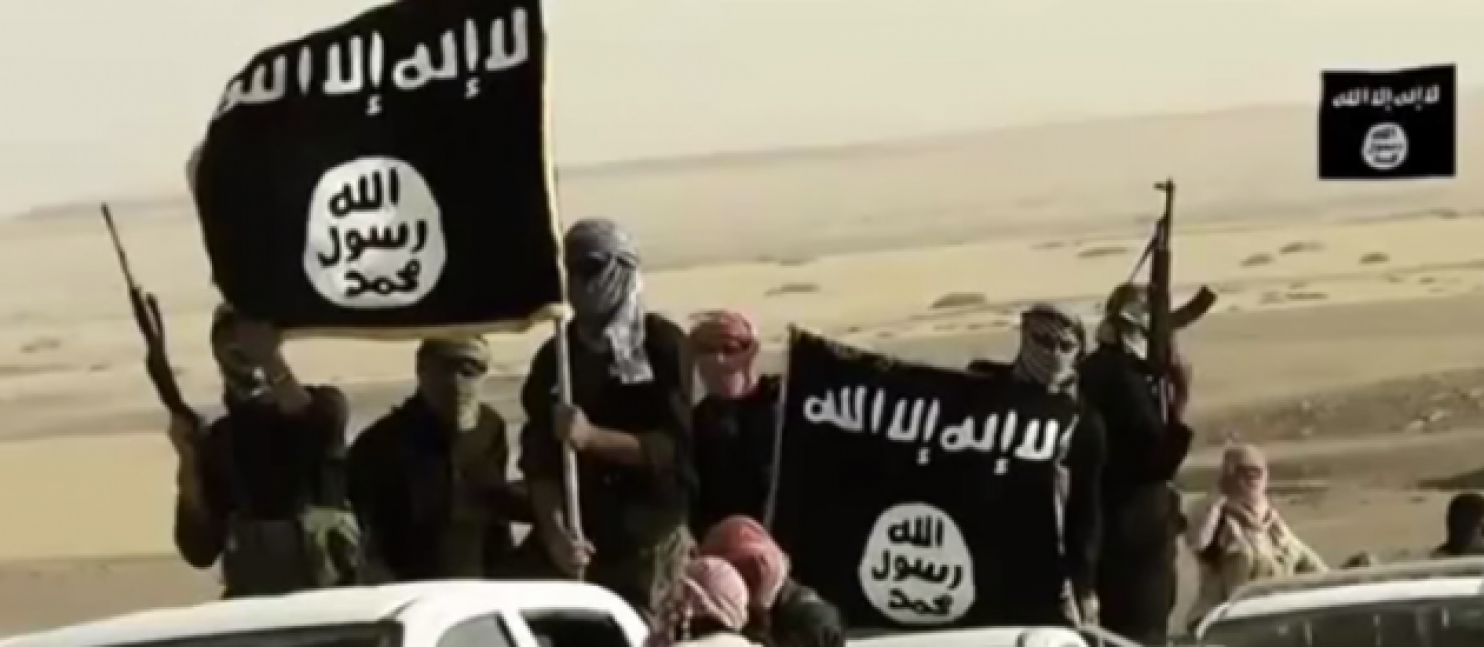by Graham E. Fuller
The ISIS Phenomenon continues to astonish—to notch up innovative new features in Islamist politics that suggest a deepening ability to exploit and feed off long-term accumulated Muslim grievances. What are the logical end-points of extremism at which these forces finally reach terminal collapse? What kind of prognosis can we offer about this phenomenon?
Islamist movements of various hues have of course dominated the field of political opposition to dictatorship in the Muslim world for at least a century —and especially to western-backed autocrats. These movements are based solidly in Islam-inspired political values and tradition—something that liberal secular movements in the Middle East can never accomplish. Anger in the Muslim world against long decades, even centuries, of western imperialism and interventionism, have long been the source and fuel of these movements.
Accumulated, these resentments ultimately exploded most dramatically on US soil with 9/11. America’s military response—non-stop war in many parts of the Muslim world since 2002, US boots on the ground, and massive damage to the infrastructure and lives of Muslims in Afghanistan, Somalia, Libya, Iraq, Syria, Pakistan, and Yemen—further fertilized the soil for Islamic radicalism. The grandfather of all such problems, the plight of the Palestinians under harsh occupation by Israel for half a century now, continues to exude poison; the tinder of Jerusalem is again awaiting its next big spark.
The grammar of terrorism (or resistance, or Islamic reassertion—however we choose to call it) continues to evolve. Al-Qaeda declared itself to the world in a stunning act of guerrilla war, the boldest blow ever against America in its 9/11 assault. For many impotent Muslims al-Qaeda was a “yes, we can” moment, dramatic proof that the Muslim World is not powerless to respond to long-term massive Western firepower. That operation led to the creation of al-Qaeda franchises around much of the world, still functioning and lethal even after Bin Laden’s death. But al-Qaeda’s strategy based itself on constant, probing jihadist attacks against US installations everywhere; it represented the latest order of radical Islamist expression.
But ISIS, the “Islamic state of Iraq and Syria” has broken yet new ground, indeed carried the radical cause to a new level, in two major respects: territory and the Caliphate.
ISIS’ proclamation of a Caliphate, however dubious its legitimacy in the eyes of most Muslims, nonetheless invokes deep themes of Islamic political history. It conjures with images of the Golden Age of Muslim power. It issues a new call for the long sought, but never achieved unity of the Muslim world. The Caliphate probably represents the supreme symbol of Muslim aspirations to political and cultural unity and even, yes, to just governance. The call is roughly akin to the appeal of the term “Christendom” to Christians of another era, a call that also failed to achieve its dream of unity, not for want of trying.
The cultural resonance of resurrecting the concept of Caliphate was powerfully augmented by another ISIS “first”—the first step in the actual elimination of “artificial colonial borders” established after World War I across great swaths of the Muslim world. This symbolic step achieved graphic demonstration in the bulldozing of the former desert checkpoints between the Iraqi and Syrian state. In theory one can now cross those one-time borders without a passport in the new state.
These two bold steps have had some appeal, especially to some segments of Muslim youth in the West, who appear alienated and sidelined in the societies in which they live. Typically they crave greater dignity, clout, a grand cause –much as a young generation of Americans went off to Spain in the late 1930s to fight the Fascist forces of Franco. Or resembling even more the youth of 11th century Europe who set off on the Crusades in response to the lure of adventure, even blood, in the name of an historic cause—and who warmed up to that task by killing tens of thousands of Jews in the German Rhineland before departing.
I actually think it unlikely that ISIS will enjoy a long period of rule from its desert fastnesses. The seeds of its own collapse lie in its brutality, extremism, and the inevitable alienation of those who have come to fall under its sway. How many Muslim youth from the West will ever even return home alive to tell their story? No states will establish diplomatic relations with ISIS or engage in serious trade or economic relationships with it. But it has been able to recruit numbers of alienated former Iraqi Sunni professionals—ex-military and Ba’th party administrators, as well as many Sunni Arab tribes, all disillusioned and resentful of the excessively sectarian character of Baghdad’s presently Shi’ite-dominated regime. These elements have greatly contributed much to ISIS success at fighting and building rudimentary administration. It is also likely, however, that Western efforts to stem ISIS expansion through air attacks may have succeeded in at least blunting ISIS’ initial surprising momentum and élan. But not to ending it.
Few longtime observers of the Middle East, including myself, would have predicted that ISIS would get even this far this fast. The clear reality is that there remain innumerable reservoirs around the Muslim world that retain their anger against the West and yearn for some degree of re-creation of Muslim power and ability to resist Western domination. They most likely do not constitute a coherent group of forces, but are rather torn by personality, ideology, and local politics. But sadly many individuals can still be stimulated into further ideological mobilization, especially when local conditions are ravaged by war, the ensuing civil conflict, and a struggle for daily existence. ISIS issues its calls to all such groups around the Muslim world. We can’t be sure how effective such—or similar—calls will be.
Bin Ladin certainly helped spread the al-Qaeda franchise for years, even while losing the ability to direct such groups. ISIS is now able to stimulate new such groups itself, at least for now. There can be no doubt that the conditions of war, physical destruction, death, refugees, mayhem, civil conflict, foreign boots on the ground, bad governance—are all still there to serve as deep reservoirs—as grist to this jihadi mill, or the next one.
Most Muslims indeed condemn ISIS radicalism, violence, and distortion of so many Islamic values and precepts. But it doesn’t take that many individuals to continue to feed such radical forces. The West has not yet even started to remove these primary sources of radicalism and grievance.
Therefore, whether or not the US and its few allies can sever even the first head of this ISIS hydra remains to be seen. As a result, despite ISIS’ obvious weaknesses, I hesitate to offer any firm optimism about the likely rapid decline of the ISIS phenomenon, or similar movements. ISIS itself may well burn itself out quickly through its own violence and narrow base of allegiance. But it suggests that the phenomenon itself is still far from having run its course. It would seem that retributive violence in the name of Islam has not yet reached its limit.
Washington must consider whether its military forces can ever be the solution to the problem—or whether they simply continue to constitute part of the problem itself. How do we bring an end to the process of generating ever newer generations of alienated Muslims who turn to—or accept—violent response via one movement or another? Removing the most obvious source of the problem—Western boots on the ground—would represent a vital start in learning how to end this unending cycle of violence. We do not seem to be heading in that direction at this juncture.
Graham E. Fuller is a former vice chairman of the CIA’s National Intelligence Council. His latest book is Turkey and the Arab Spring: Leadership in the Middle East. This article was first published on Graham E. Fuller’s website and was reprinted here with permission. Copyright Graham E. Fuller.






Jewish conspiracy theory again? Clearly Israel does try to influence the US, but so do lots of other single-interest groups. My guess is that the arms industry (sorry, defense) has the greatest influence here.
What the author fails to mention is that the ISIS ideology is strictly Sunni. The Shias who have a tradition of progression and revolts against oppression have already succeed in going beyond dependency on the West.
In my view ISIS is a doomed attempt to do the same for the Sunnis. There are many reasons for the expected failure. Sunnism is divided between competitive view of what a Sunni society should be. It is a sect that rejects completely any attempt to interprete the Coran and the Sunna in a progressive way to adapt to the modern world.. Therefore it is stuck in a middle age view of Islam that it cannot break off from. The Sunnis, extremist or moderate are in total confusion as they are unable to formulate what a modern Sunni society should be. Ataturk has simply rejected Islam to build modern Turkey. Erdogan is attempting to bring back Sunni Islam at the forefront and remodel the turkish society according to his vision of a a modern Islam. People doubt he will be able to sustain that effort. At least he tries while the Sunni Arabs are turning in a circle. As there is no Arab model of a Sunni society, ISIS comes on time to propose a model by force. Many Sunnis recognize themselves in the ideology of ISIS while rejecting the violent excesses. That is why ISIS is surviving amongst the Sunni population in Iraq and Syria. Yet it is fought by Saudi Arabia who sees it a threat to its monopoly of Sunnism in the region and by the ambiguous West who sees it as a possible threats to its allies in the region. Syria, Iraq and Lebanon are not fighting ISIS for its ideology but because ISIS have taken territories and threats to take more of their country.
In my view only a weakening or a regime change in Saudi Arabia can help solving the issue of Islamist extremism as an ideology. Until then such extremist movements will continue to exist and threaten the region
Where does this ISIS thingy end? Some say with the overthrow of the Saudi Royal family.
I agree with most of what you are saying but would add one additional factor.
Erdogan and his Prime Minister have recently made speeches extolling the virtues of the former Ottoman Empire and promising to restore it.
This explains why the Turkish border with Syria is so “leaky”, as the Syrian Foreign Minister has recently pointed out.
The Turkish religio-political elite are using ISIS to diminish the capabilities of the Kurdish forces and to act as a mechanism to overthrow the Syrian regime.
The idea that Turkey is a secular regime belongs now – regrettably – firmly in the past.
They are vying with the Iranian and Saudi elites for power in that part of the world.
If you study Ottoman history you will see that this current situation is a very old scenario.
It has been US policy to create and stoke the Sunni-Shia divide, which led to the creation of ISIS. So why would the US change its divide-and-conquer strategy? It won’t.
The decisive US divide-and-conquer move was the destruction of the Shiite al-Askari shrine in (Sunni) Samarra on Feb 22, 2006 which caused substantial violence. During its 100-year existence, the Askariya Mosque, housing the 1200-year shrine, was never attacked. The Sunni population of Sammara took particular pride in its care, a symbol of Shia-Sunni brotherhood. Sammara is the site of the disappearance of the 12th and last Imam — Mohammed al-Mahdi, a descendant of the Prophet Mohammed. It is said he will return to restore justice to the world.
The bombing of the Al-Askaria Mosque and its violent aftermath ratcheted the numbers of displaced persons up to a staggering 2.7 million. In a period of about a year, five percent of Iraq’s total population fled their homes and settled elsewhere in Iraq while an additional 2 million or so fled the country entirely. It is important to underscore that this displacement was not just a by-product of the conflict, but rather the result of deliberate policies of sectarian cleansing by armed militias.
And the beat goes on. Iran’s Supreme Leader Ayatollah Khamanei: “The enemy invests to provoke proxy wars in the region and hopes for wars between Shiites and Sunnis.”